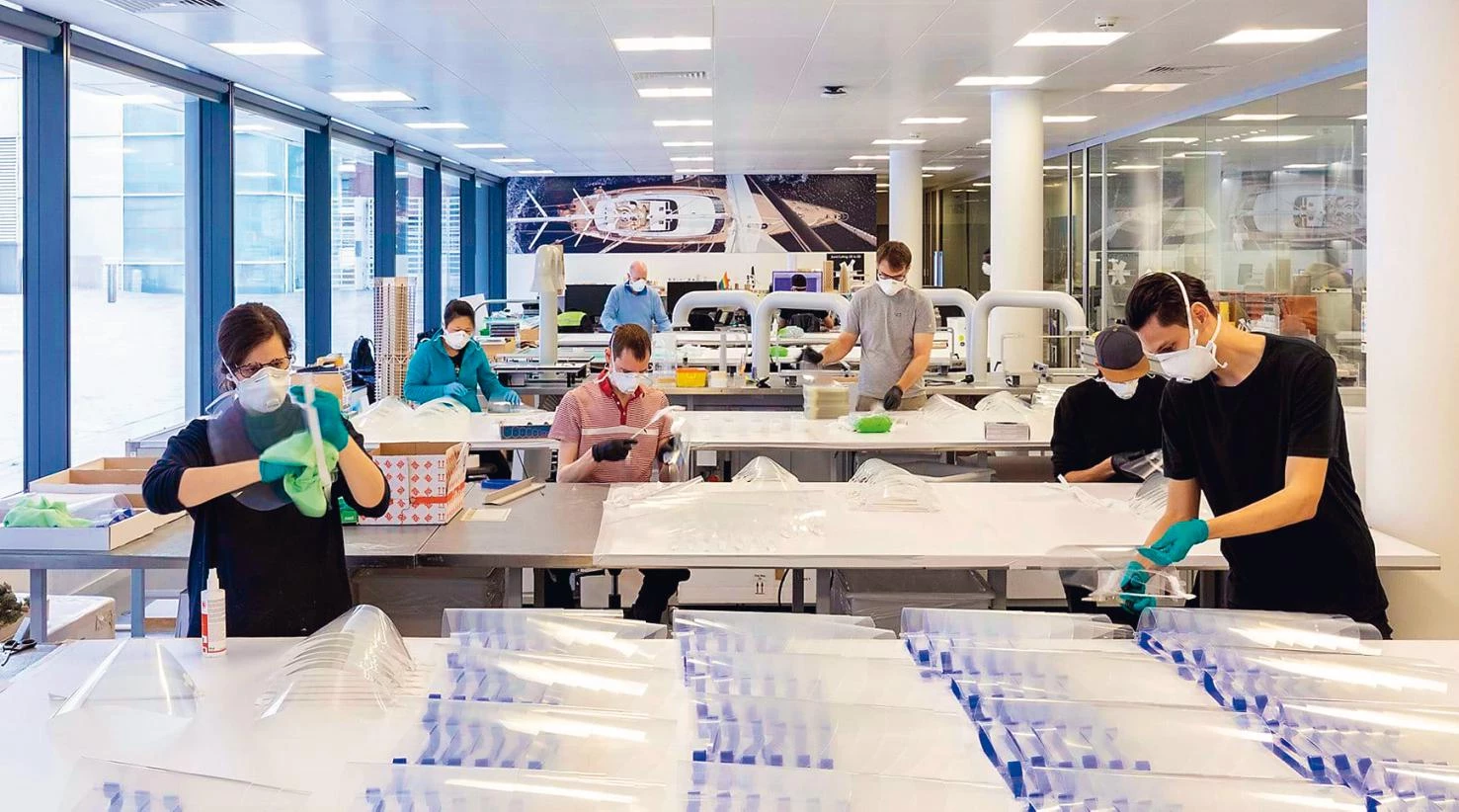
The history of cities and the buildings that comprise them is inextricably linked to the ever-recurring pattern of disease and issues of public health. There are countless examples.
The Cholera outbreak of the 1850s, which decimated the population of London, cleaned up the River Thames from an open sewer, created the magnificent Victoria and Albert Embankment and led to the present-day system of modern sanitation. Health concerns of the day encouraged the construction of the green spaces that are New York’s Central Park and Boston’s Emerald Necklace. The Modern Movement’s obsessions with light, outdoor terraces, whiteness and nature was in part a response to the scourge of tuberculosis. The Great Smog of London in 1952 claimed 12,000 lives over five days and led to the 1956 ‘Clean Air Act’, and the switch from coal fires to gas. I have listed these as a series of ‘cause and effect’. But the ‘causes’ are long forgotten because everything that I have described would have happened anyway, though would have taken more time. So, if we indulge in trying to read a crystal ball to tell the future, what might we expect?
One argument suggests that the dense city will lose its power of social attraction. I question this for several reasons – dominantly, that the future of humanity is not two-metre distancing, and statistically some of the densest urban cores, such as Tokyo, Singapore and Seoul, have contained the disease, whilst other more suburbanised areas, particularly the American South-West, have suffered far more.
The factors for beautifying and making the denser city more healthy were already manifest and converging from different directions before the pandemic. The changing attitudes to ownership of younger generations, proliferation of ride-sharing vehicles through hand-held devices, electrification and robotising of vehicles that can safely move nose to tail, aerial mobility and demand for higher standards of public transport – more spacious and comfortable – all conspire to make huge swaths of our present transport infrastructure – roads and parking spaces – redundant.
Add to this the potential shift of agriculture to urban farming, with higher yields of crops using much less water, eliminating the transport of produce and delivering fresher and more delicious food at lower cost. The redundant multi-storey car park is the ideal city farm – all it needs is the market attached to it.
All of these converging factors, together with the rising popularity of e-bikes and other healthier forms of personal mobility still to be invented, and the ability to control the micro-climate of outdoor spaces (cooler in summer, warmer in winter) could make the city become greener, quieter, cleaner and ever more desirable as a place to live, work and play.
We have all learnt to exploit the digital infrastructure of workspace in lockdowns with Zoom conferences linking us across continents. It may change our travel patterns in the future and we will see the evolution of ‘third places’ of work/leisure in the countryside or electronic Starbucks in the High Street. Despite all these shifts, face-to-face contact will become more precious and sought after. The Headquarters will be more about lifestyle and creativity with more flexible and staggered hours – again, a trend already embraced by the more progressive organisations where boundaries between work, socialising and leisure are already blurred.
As we have noted earlier, rising levels of health consciousness will mandate for more natural systems of ventilation, fresh air, sunlight and contact with the natural world. We have pioneered these as a progressive fringe, but they could be the new normal. The old centralised systems that relied on questionable filters and the recirculation of stale air will no longer be acceptable.
If the centralised systems in a building are being called into question and replaced by more autonomous control of the individual’s environment, then the same could be true of the bigger picture of urban infrastructure. In California last year, the ageing power lines and bankrupt utility provider left 2.5 million people without electricity – many of them scrambling to find portable home generators. Smaller, more compact energy sources by new-generation fission or breakthroughs in battery storage could replace a dependence on megapower centres and their grids. The same could be true of processing waste to energy – all part of a pattern to greater autonomy.
The same trend could call into question the heavy centralisation that currently constitutes global networks and supply chains. To take the opposite ends of the spectrum of utility and luxury, will one country continue to dominate the production of drugs and another the growing and distribution of flowers? Globalisation has been a force for raising standards worldwide, but it has decimated communities and created ‘rust belts’ in once industrialised societies. In the same way that big power grids are already being questioned, will Covid-19 lead to individual countries, or even states, being more self-sufficient? Might it challenge the trend to ‘bigness’ – the consolidation that creates fewer, larger providers, as has happened in the manufacture of automobiles and aircraft, and with airlines and even accounting firms? Or will the shutdown of Covid-19 accelerate the trend to ‘fewer and bigger’ because they are the only ones with the capital to survive? Politically, will this crisis lead to more global collaboration and the prospect of collectively addressing the big issues of climate change and the challenges of vaccines, or will we see more fragmentation and ‘everyone fighting for themselves’?
The hope is that it will be “we, we, we” and not “me, me, me”. The ideal outcome is shared global action on the big environmental and health issues, and local action in the making, growing and powering of our connected societies. In other words, the best balance of both worlds.





